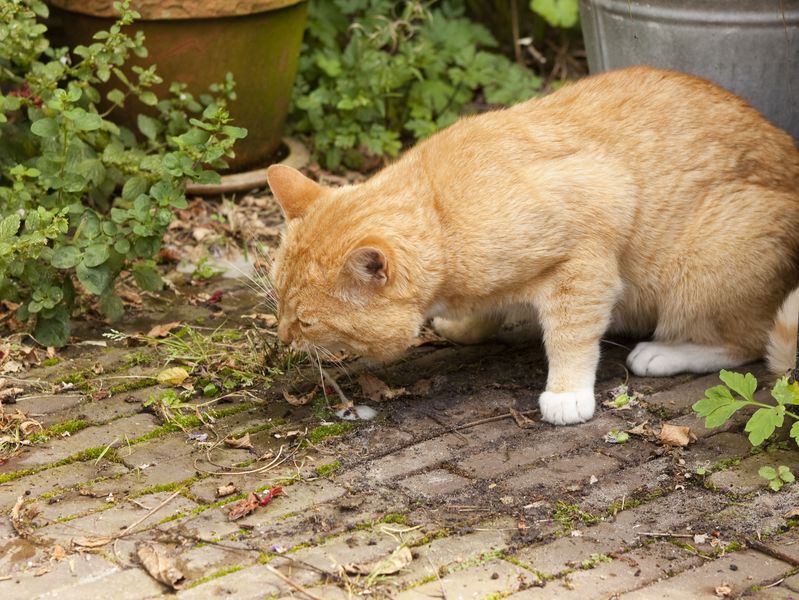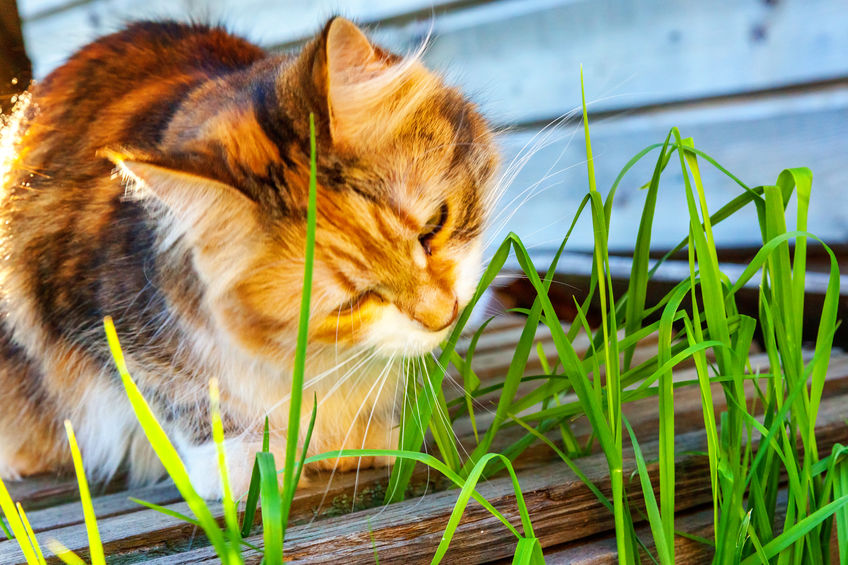Hairballs Are More Than Just A Nuisance
Cats are consummate groomers. In fact, cats spend 30% of their time grooming. They work hard to keep their coats shiny and immaculate, but while cleaning themselves with their tongues, cats swallow up to two-thirds of the hair they have shed. Most hair harmlessly leaves a cat’s digestive tract without causing problems. At other times, your cat will vomit the trapped hair that isn’t excreted through stools.
There is nothing is quite so alarming as hearing the “hack-hack-hack” of a cat trying to cough up a hairball. And there is almost nothing as disconcerting as seeing one on the floor – unless it is stepping on it at night in bare feet.
They might be a nuisance for us humans, but hairballs are more than just a source of discomfort for cats. They can compact with undigested food in the stomach and gastrointestinal tract, blocking the passage of digested food through the intestines, causing painful constipation or a dangerous impaction that may need to be removed surgically.
Symptoms of Hairball Problems
- Cylindrical messes on the floor or furniture
- Constipation, or hard stools with hair showing
- Dry, matted coat
- Frequent dry coughing or hacking
- Lack of appetite
- Depression or lethargy

What To Do About Hairballs
If you have a cat, you’ve most likely dealt with hairballs. Most cats will produce hairballs at some point in their lives, but cats that throw up hairballs all the time may be experiencing something more serious.
Helping Prevent Hairballs
- Brush your cat daily. Regularly grooming your cat is the easiest way to prevent hairballs. Brushing or combing removes the excess hair from your cat before they can swallow it. Most cats enjoy being brushed, and it is great bonding time with your feline buddy. Longer-haired cats such as Persians and Maine Coons are much more prone to hairballs so combing them regularly can really help.
- Keep your cat hydrated. Make sure that your cat drinks enough water to hydrate its intestinal tract. The liquid hydration will keep it lubricated and running smoothly.
- Provide digestive supplements. Try cat food designed to maintain digestive health. These special hairball formula foods include a high volume of fibre to help keep the gastrointestinal tract moving normally. They also help bind hair together in the stomach to help it travel through the digestive system. There are also several formulas that contain psyllium seed. It will encourage your cat’s digestive tract to pass the hairball instead of regurgitating it. There are also gels and granules to be sprinkled on food available. They help pass hairballs through lubrication or by providing soft bulk, or a combination of both.

- Give your cat catnip or cat grass. This treat can provide extra fibre for your feline which helps them expel the hairball.
- Try lubricants. Some cat owners have had success by giving their cats a small amount of oil or butter two or three times a week. This can lubricate the intestinal system and help expel hairballs.
When To Talk To Your Vet
While most cats will have hairballs at some point, it should not be a common occurrence. Older cats also regurgitate more hairballs, mainly because as a cat ages, it becomes a better groomer and has more reason to develop hairballs.
If you are worried about the number of hairballs your cat is bringing up, it may well be a good idea to talk with your local vet as something more serious may be going on.
If notice your cat has a loss of appetite, is fatigued or has repeated episodes of coughing and hacking without anything coming up, a hairball may have created an internal blockage. A cat that develops a large hairball in its digestive tract may have frequent diarrhoea or constipation. If this occurs, a trip to see your vet is in order.
If you’re looking for a comfortable, safe and secure environment for your cat where you know your cat will be well looked after, call 09 299 7415 to ask about the benefits of a cattery. Inspections are welcome between 10.00am and 4.00pm each day.
